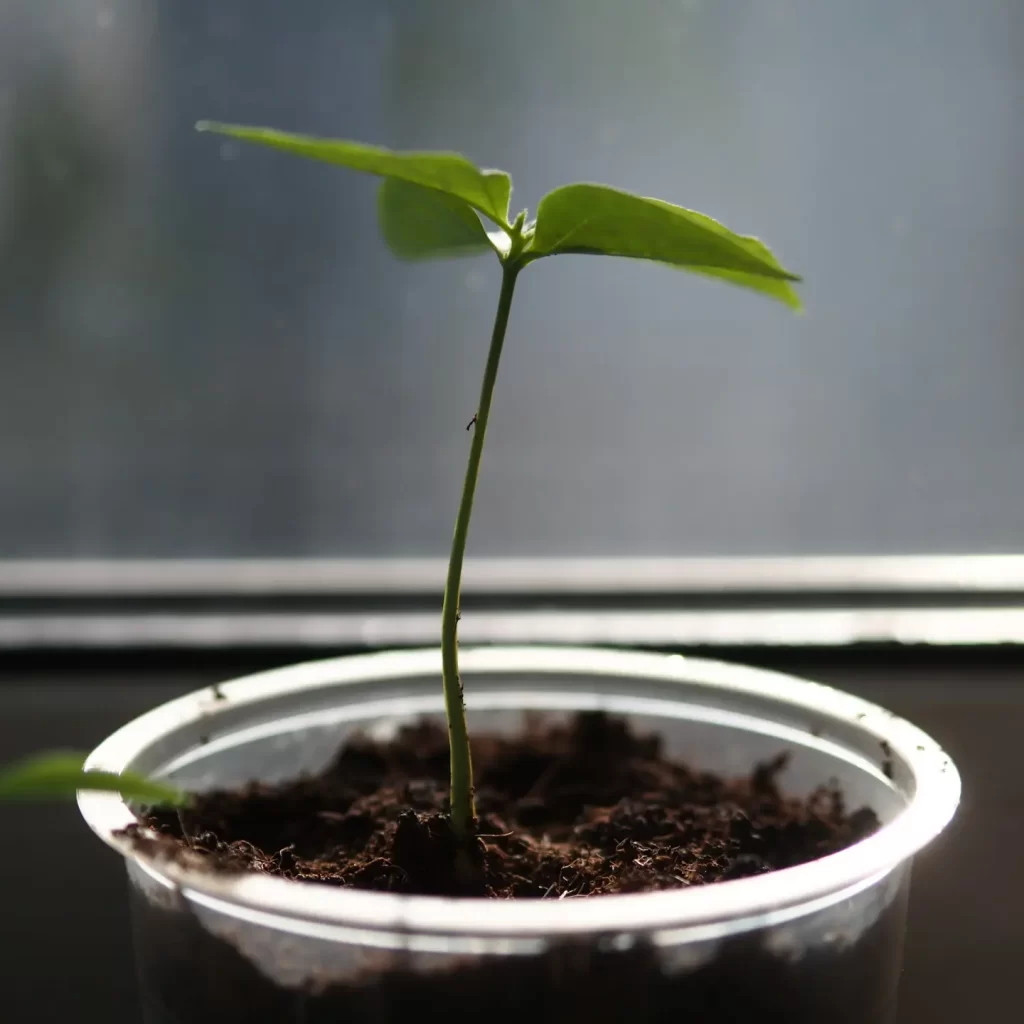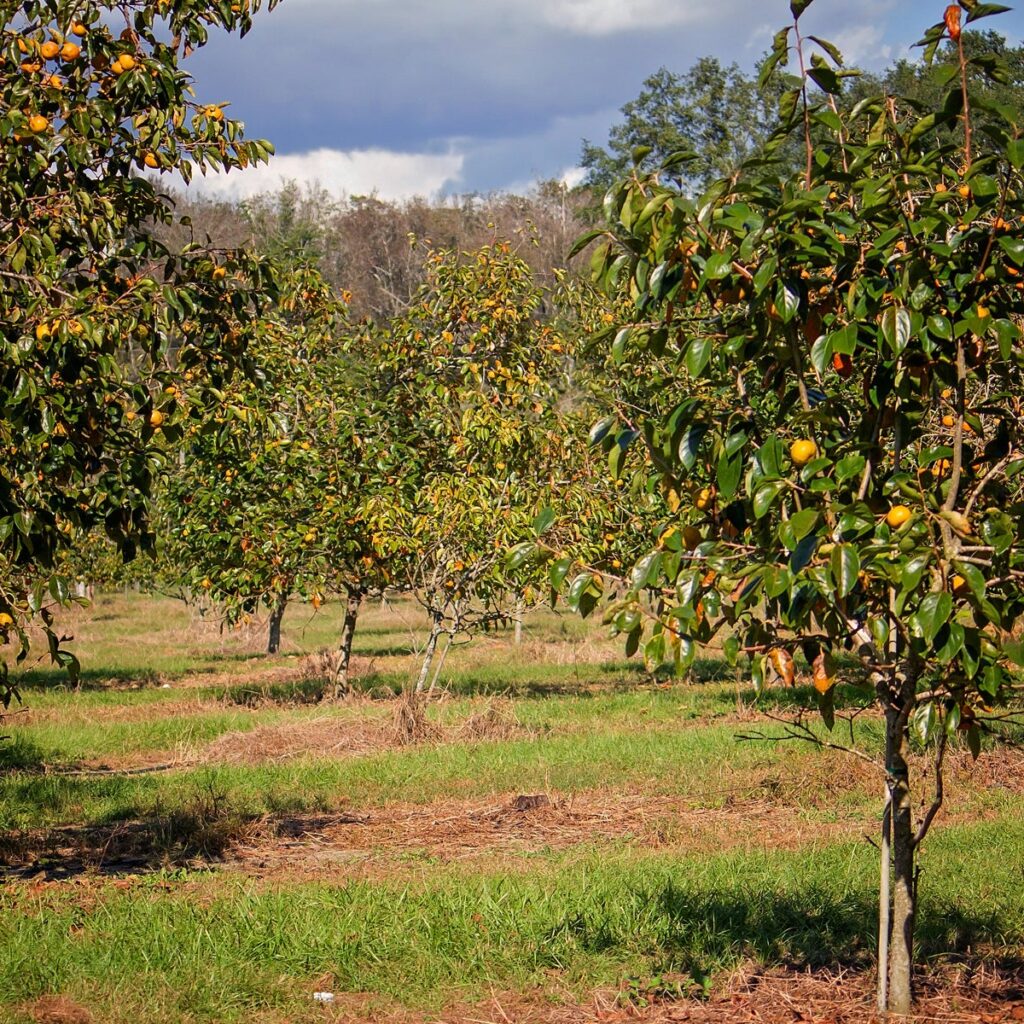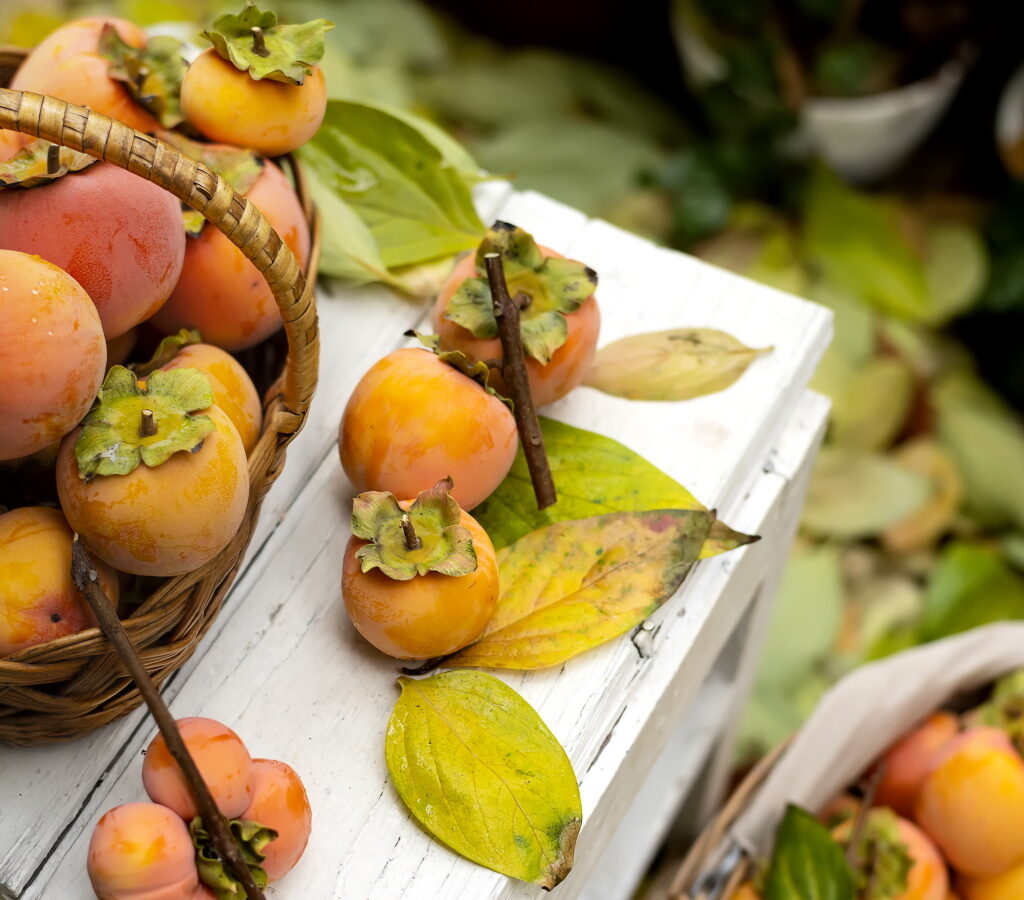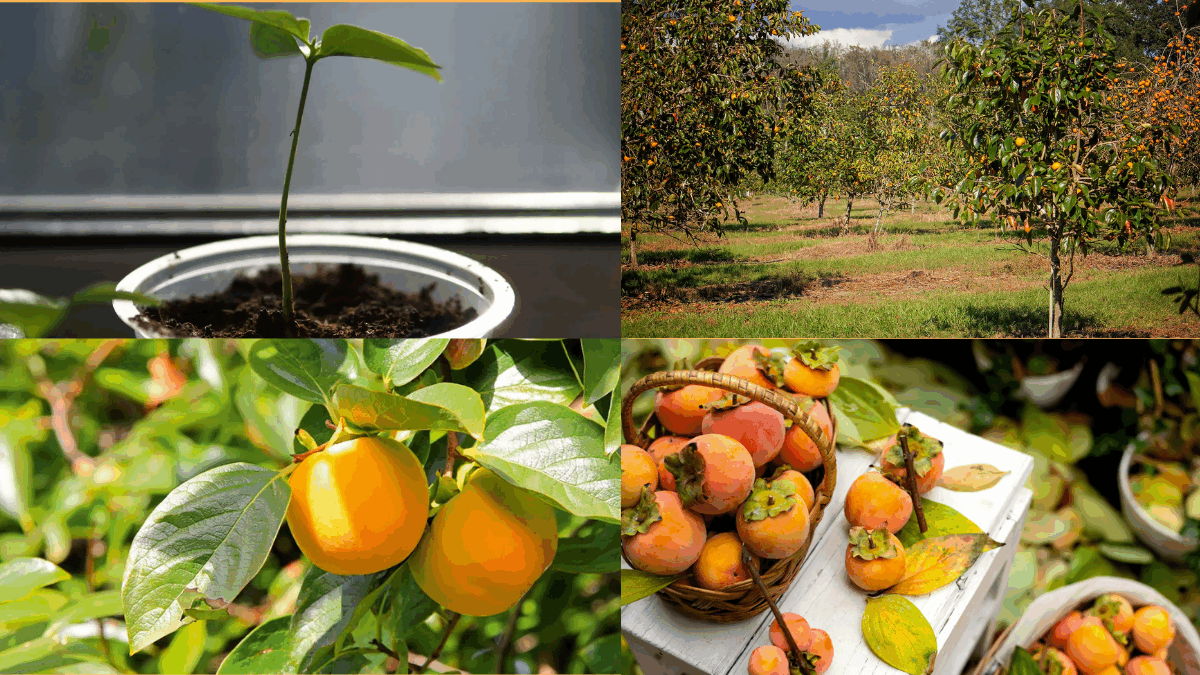If you’re searching for a beautiful, easy-care fruit tree that also offers delicious, sweet, and honeyed fruit in fall, persimmons are a fantastic choice. With their striking orange fruits, ornamental foliage, and relatively low maintenance requirements, persimmons deserve a spot in any home garden.
In this complete guide, we’ll cover everything you need to know about how to grow persimmons in your garden — from choosing the right variety to planting, care, and harvesting.

Why Grow Persimmons?
Persimmons aren’t just eye-catching additions to the garden; they also offer several benefits:
- Easy to grow with minimal pests or diseases.
- Beautiful ornamental value with vibrant fall foliage.
- Long-lasting fruit that can be eaten fresh, dried, or cooked.
- Hardy and adaptable to a variety of soil and climate conditions.
Plus, they’re rich in vitamins A and C, fiber, and powerful antioxidants — a healthy treat straight from your backyard.
Types of Persimmons
Before planting, it’s essential to choose the right type of persimmon for your region and personal taste preferences. Persimmons fall into two main categories:
1. Astringent Persimmons
These need to ripen fully and become soft before eating, or else they’ll taste very bitter.
Popular astringent varieties:
- Hachiya: Large, heart-shaped fruit with sweet, custardy flesh when fully ripe.
- Saijo: Smaller, very sweet fruits when soft.
2. Non-Astringent Persimmons
These can be eaten while still firm and crisp, much like an apple.
Popular non-astringent varieties:
- Fuyu: Round, tomato-shaped fruit with mild, sweet flavor. Excellent eaten fresh.
- Jiro: Similar to Fuyu, slightly flatter, and very crisp.
Tip: If you’re new to persimmons, Fuyu is a great beginner’s choice — sweet, easy to grow, and versatile.
Ideal Growing Conditions for Persimmons
Sunlight
Persimmons thrive in full sun, requiring at least 6-8 hours of direct sunlight daily to produce high-quality fruit.
Soil
- Well-draining soil is crucial, as persimmons dislike soggy roots.
- They tolerate a variety of soils, from loamy to sandy, with a preferred pH between 6.0 and 6.5.
- Enrich planting holes with compost or organic matter for best results.
Climate
Persimmons grow well in USDA zones 7-10. Some varieties like ‘Hachiya’ can tolerate slightly cooler temperatures.
Bonus: Once established, persimmons are quite drought-tolerant.

How to Plant Persimmons in Your Garden
When to Plant
The best time to plant persimmons is in late winter to early spring, while the tree is still dormant and the ground is workable.
Where to Plant
Choose a sunny, sheltered spot protected from strong winds. Ensure enough space for the mature tree, as some varieties can spread 15-20 feet wide.
Planting Steps
- Dig a hole twice as wide and as deep as the tree’s root ball.
- Mix in compost or aged manure to enrich the soil.
- Place the tree in the hole, keeping the top of the root ball level with the surrounding ground.
- Backfill with soil, firming it gently to eliminate air pockets.
- Water thoroughly to settle the soil.
- Mulch around the base with organic mulch like straw or wood chips, leaving a few inches clear around the trunk.
Caring for Persimmon Trees
Persimmons are relatively low maintenance, but a few simple practices will ensure healthy growth and an abundant harvest.
Watering
- Water young trees deeply once a week during dry spells.
- Mature trees are drought-tolerant but will produce better fruit with occasional deep watering in dry weather.
- Avoid overwatering — persimmons dislike soggy soil.
Fertilizing
- In early spring, apply a balanced, slow-release fertilizer (such as 10-10-10).
- Avoid over-fertilizing, as excessive nitrogen encourages leafy growth at the expense of fruit.
Pro Tip: Too much fertilizer can cause fruit drop, so it’s better to under-fertilize than overdo it.
Pruning
- Prune in late winter or early spring while the tree is dormant.
- Remove dead, damaged, or crossing branches to maintain a strong framework.
- Thin out dense growth to improve air circulation and light penetration.
- Young trees benefit from light shaping to establish a good structure.
Mulching
Apply a 2-3 inch layer of mulch around the base to:
- Retain soil moisture
- Suppress weeds
- Protect roots in winter
Keep mulch a few inches away from the trunk to prevent rot.

How to Harvest Persimmons
When to Harvest
- Astringent persimmons (like Hachiya) are ready when soft, bright orange, and almost jelly-like in texture.
- Non-astringent types (like Fuyu) can be harvested when fully colored and still firm.
How to Harvest
- Use sharp garden shears or scissors to snip the fruit from the tree, leaving a short stem attached.
- Handle gently to avoid bruising.
Tip: Persimmons continue ripening off the tree. Store firm fruit at room temperature until ready.
Common Pests and Problems
Persimmons are surprisingly resilient but can encounter a few issues:
Pests
- Aphids: Cause leaf curling and sticky residue. Treat with insecticidal soap or a strong water spray.
- Scale insects: Look like small bumps on stems and leaves. Scrape off or use horticultural oil.
- Birds: Love ripe persimmons! Use bird netting or harvest early to avoid losses.
Diseases
- Anthracnose: Fungal disease causing fruit rot. Remove affected fruit and apply fungicide if necessary.
- Root rot: From overly wet soil. Ensure good drainage and avoid overwatering.
Overwintering Persimmons
- In colder climates, young trees may need protection in winter.
- Mulch heavily around the base and wrap trunks with burlap for insulation.
- Container-grown persimmons can be moved to a sheltered spot during severe cold snaps.
Propagating Persimmons
Persimmons can be propagated by:
- Seeds: Slow and less reliable.
- Cuttings: Take softwood cuttings in late spring.
- Grafting: The most common commercial method, especially for preserving desirable fruit traits.
For home gardeners, purchasing a young grafted tree is the easiest way to start.

Health Benefits of Persimmons
Persimmons aren’t just pretty — they’re packed with nutrients:
- Rich in fiber: Supports digestion.
- High in vitamins A and C: Boosts immunity and skin health.
- Loaded with antioxidants: Fights inflammation and promotes heart health.
A tasty and healthy snack straight from your garden!
Final Thoughts: Add a Touch of Autumn Gold to Your Garden
Growing persimmons in your garden is both rewarding and surprisingly easy. With their graceful form, vibrant fall foliage, and honeyed fruits, these trees are a standout addition to any landscape.
Whether you choose a crisp Fuyu or a luscious Hachiya, a persimmon tree will delight your senses for years to come.






Leave A Comment